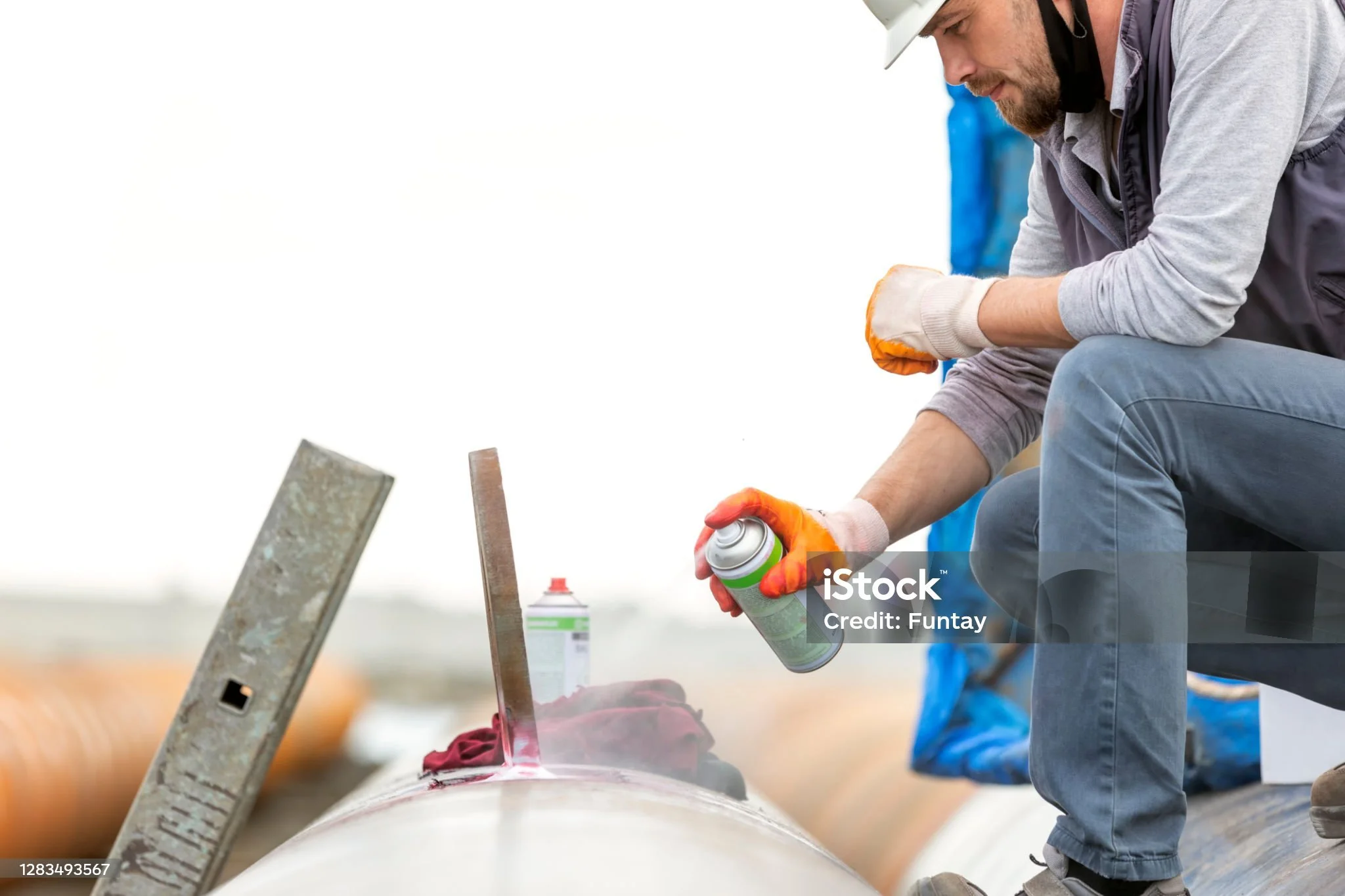
Liquid Penetrant Testing (PT)
Liquid Penetrant Inspection (also called Dye Penetrant Testing or Penetrant Testing — PT/LPI) is a nondestructive testing method for revealing surface-breaking defects in non-porous materials. A low-surface-tension liquid penetrant is applied to the part, allowed to soak into discontinuities, excess penetrant is removed, and a developer is applied to draw out trapped penetrant to form visible indications under appropriate lighting.
Our PT Services
Precise surface defect detection for non-porous metals, glass and ceramics using industry-standard liquid penetrant methods. Shop and field-capable with certified technicians and professional reporting.
Visible Dye Penetrant
Bright red dye penetrants evaluated under white light — ideal for general fabrication, castings, and applications where fluorescent equipment is not required.
Fluorescent Penetrant (UV)
High-sensitivity fluorescent penetrants inspected under UV-A lighting in darkened booths for superior contrast and detection of fine cracks and porosity.
Solvent-Removable & Water-Washable Systems
We select the penetrant system (solvent-removable, water-washable, or post-emulsifiable) based on part geometry, contamination, and client specifications.
Field & Shop Inspections
Portable kits for on-site inspections and full dark-room booths for controlled shop evaluations — we support scheduled maintenance, outages and production checks.
Our Inspection Process
Review & Planning: Confirm acceptance criteria, part history, and surface condition; choose the appropriate penetrant system.
Pre-cleaning: Remove oil, scale, paint or other contaminants that prevent penetrant entry.
Penetrant Application: Apply penetrant by spray, dip or brush; allow adequate dwell time for penetration into discontinuities.
Excess Removal: Remove surface penetrant carefully (solvent wipe, water wash, or emulsify) without extracting penetrant from defects.
Developer Application: Apply developer to draw trapped penetrant out and create visible indications.
Inspection & Documentation: Inspect under appropriate lighting (white light or UV), record indications with photos and sketches, and prepare the formal report.
Post-Test Cleanup: Clean and preserve the part, document chemical batch numbers and disposal where required.
Ready to schedule a LP inspection?
Contact our certified technicians for quotes, availability, and safety planning.
